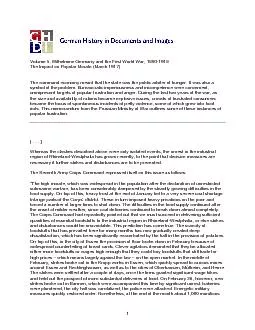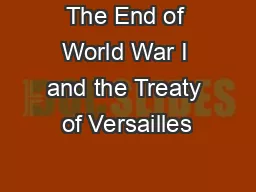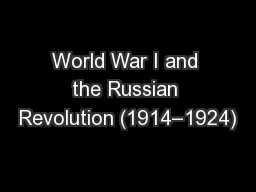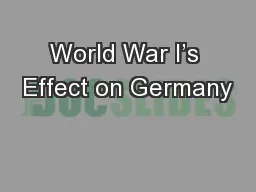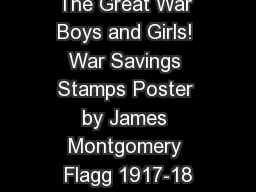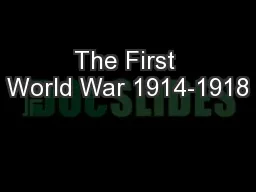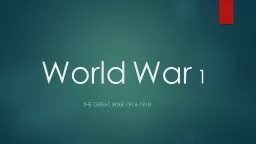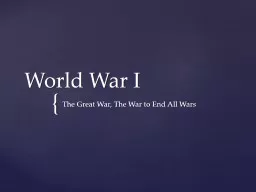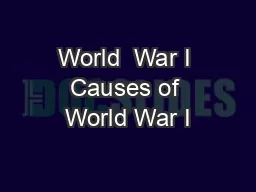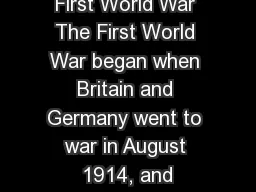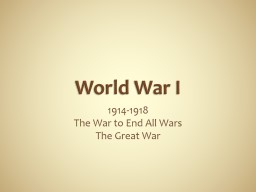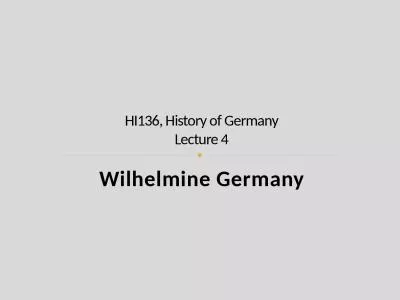PDF-Volume 5. Wilhelmine Germany and the First World War
Author : natalia-silvester | Published Date : 2017-01-11
1 1890 1918 The Impact on Popular Morale March 1917 The command economy meant that the state was the public arbiter of hunger It was also a symbol of the problem
Presentation Embed Code
Download Presentation
Download Presentation The PPT/PDF document "Volume 5. Wilhelmine Germany and the Fir..." is the property of its rightful owner. Permission is granted to download and print the materials on this website for personal, non-commercial use only, and to display it on your personal computer provided you do not modify the materials and that you retain all copyright notices contained in the materials. By downloading content from our website, you accept the terms of this agreement.
Volume 5. Wilhelmine Germany and the First World War: Transcript
Download Rules Of Document
"Volume 5. Wilhelmine Germany and the First World War"The content belongs to its owner. You may download and print it for personal use, without modification, and keep all copyright notices. By downloading, you agree to these terms.
Related Documents

